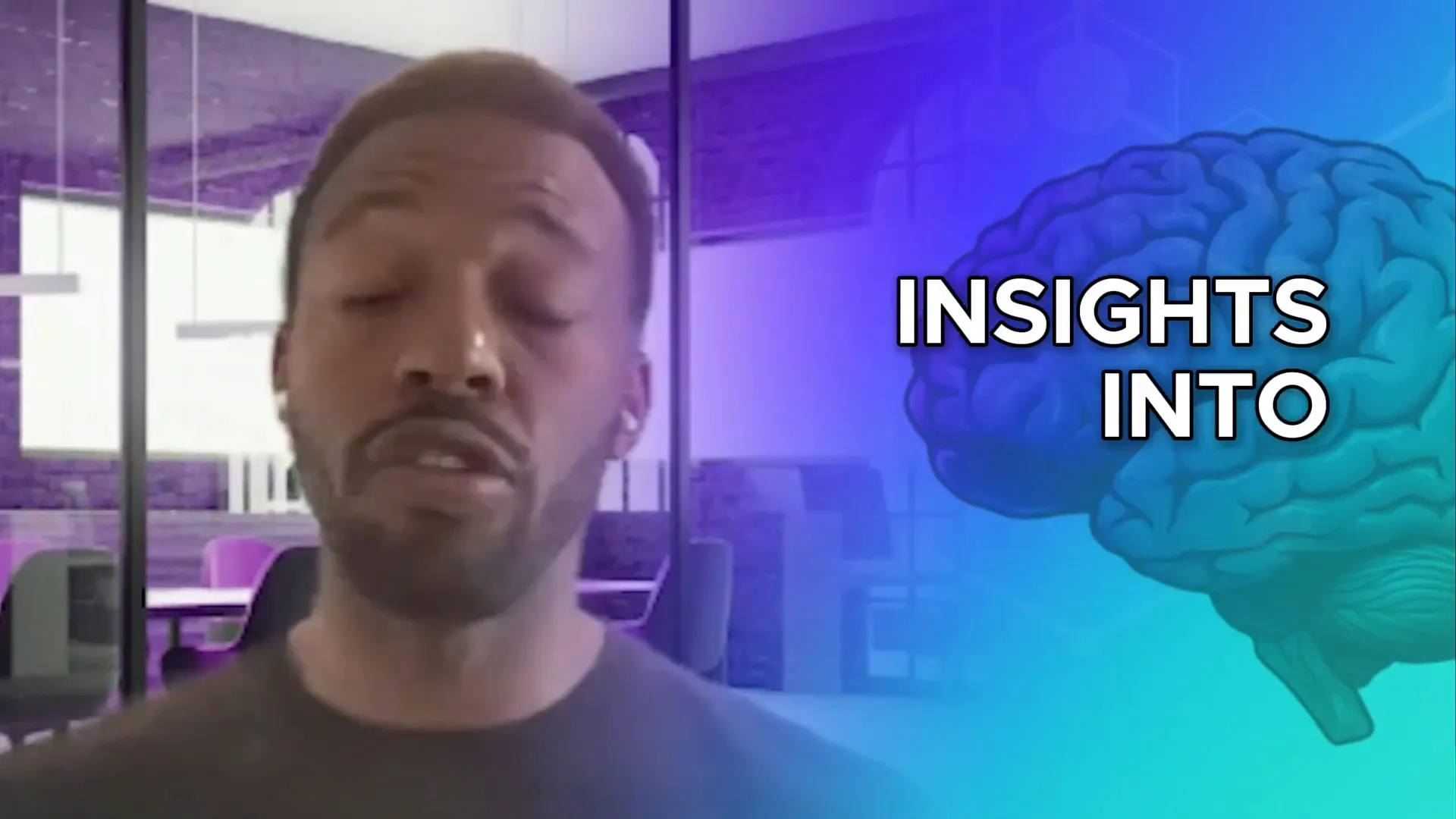AI in Recruiting: How EQ.app Empowers Recruiters to Do the Heavy Connecting
Artificial intelligence is no longer a distant concept or a future prediction—it’s already transforming industries, especially recruiting. But contrary to the widespread fear that AI will simply replace human jobs, the real story is much more nuanced. The future of recruiting lies in a partnership between AI and humans: AI does the heavy lifting, automating repetitive tasks and processing vast amounts of data, while recruiters focus on the irreplaceable art of human connection.
This insightful perspective comes from Marcus Sawyerr, Founder and CEO of EQ.app, and Joel Lalgee, a renowned recruitment leader and coach. Together, they explore how AI in recruiting is evolving, the challenges and opportunities it presents, and how recruiters can leverage AI to become trusted advisors rather than just job fillers. Here’s a deep dive into their discussion on the future of recruiting powered by AI and the unique role humans will continue to play.

The Inevitability of AI Impacting Jobs: It’s About How, Not If
One of the first points Marcus makes is that the question is no longer whether AI will impact or change jobs—it’s already happening. The important question is how this change will unfold. The idea that someone “knowing AI will replace you” was often used as a comforting phrase, but in reality, it’s not that simple or reassuring.
Instead, the key for recruiters and professionals is to identify which elements of their jobs are most valuable and should be doubled down on, and where AI technology can be integrated to enhance productivity. Marcus puts it well:
"You've gotta figure out what are the elements of my job that they say if double down on that and where can I use the tech?"
He sees the evolution of AI in recruiting as a process of transforming data into information, information into insights, insights into knowledge, and knowledge into wisdom that delivers real value.
Moving Fast to Learn Fast: The Advantage of Early Adoption
In an age where AI developments happen daily, Marcus and Joel emphasize the advantage of moving quickly. Early adopters of AI tools in recruiting gain a learning edge that allows them to experiment, adjust, and improve their workflows faster than those who hesitate.
Joel notes that smaller and medium-sized recruiting firms often have the agility to move faster because they don’t have entrenched legacy systems holding them back. This speed translates into better understanding and quicker realization of AI’s benefits.
Where Is the Friction? Using AI to Solve Real Recruiting Problems
One of the key strategies Marcus shares is the importance of showing up where the friction is in recruiting processes. Many organizations get enamored by AI’s capabilities—like chatbots that can talk and interact—but lose sight of the actual problems they need to solve.
Marcus recounts his journey with EQ.app, which began as a community-first approach, providing support and insights to recruiters, and gradually evolved into building AI products like EQ Buddy, a copilot tool that helps recruiters automate administrative tasks.
He introduces an important concept called OTT—Objectives, Tasks, and Tools:
- Objectives: What are you trying to achieve?
- Tasks: How are you going to do it?
- Tools: What resources or AI can help accomplish these tasks?
By clarifying the objectives first, recruiters and leaders can better determine how AI fits into their workflows and what can be automated or enhanced. This approach helps avoid the trap of using AI for AI’s sake and instead focuses on real business outcomes.
Common Recruiting Challenges AI Helps Address
Marcus highlights some of the most common recruiting challenges where AI shows tremendous potential:
- Inbound Recruiting: Processing large volumes of job applications efficiently. For example, some clients receive tens of thousands of applications annually, making manual review impossible. AI can sift through these applications quickly to identify promising candidates.
- Outbound Recruiting: Identifying and reaching out to passive candidates who are not actively applying but may be suitable for roles.
- Sourcing, Screening, and Scheduling: Finding candidates, verifying their qualifications, interest, and availability, and arranging interviews.
Marcus stresses that there is “gold in the database” — many firms have valuable candidate data but struggle to leverage it effectively. AI infrastructure that integrates and flows data seamlessly between systems is critical for delivering meaningful outputs, such as relevant candidates or scheduled meetings, freeing recruiters to focus on relationship building.
The Future Landscape: End-to-End AI Recruiting vs. Specialized Firms
Marcus foresees two distinct types of recruiting firms emerging as AI adoption grows:
- Default AI End-to-End Firms: These firms leverage AI to automate the entire recruiting process for generalist roles, from sourcing to placement.
- Highly Specialized Recruiting Firms: These firms focus on niche markets or senior roles where human relationships, trust, and specialized knowledge are paramount. AI empowers these firms but doesn’t replace the human touch.
He explains that while AI can handle many operational tasks, margins in executive search and specialized recruiting will face pressure as clients demand faster, cheaper, and more transparent services. The way to protect those margins is through strong relationships and trust—factors AI cannot replicate.
Joel adds that the recruiting industry is inherently diverse, with thousands of firms existing because of specialization and nuanced client needs. AI will transform the structure of recruiting firms, but it won’t eliminate the need for human expertise.
Recruiting Passive Candidates: AI’s Role and Limitations
One area of skepticism is recruiting passive candidates—those not actively looking for a job but who might be open to the right opportunity. Marcus clarifies that AI can help identify and target these candidates by analyzing data and timing outreach effectively.
However, the actual “warm-up” and relationship-building must come from humans. Cold calls or impersonal messages rarely work, especially for senior roles. AI can support by personalizing and targeting communication, but trust and genuine conversations remain essential.
The Great Restructure: How AI is Changing Job Roles and Recruiting Strategies
Marcus introduces the concept of the “Great Restructure,” a period where organizations rethink roles, teams, and hiring strategies in light of AI’s capabilities. He points out that many roles created by computers themselves—such as software engineering jobs—are now being re-evaluated as AI automates coding and testing tasks.
The recent Microsoft layoffs serve as an example of this restructuring. Despite letting go of thousands of employees, Microsoft still has many open positions, signaling a shift rather than a simple reduction in workforce.
Recruiters and talent acquisition leaders must adapt by advising businesses on how to structure teams strategically, moving beyond filling roles to becoming trusted business partners who add value through insights and strategic guidance.
Becoming a Trusted Advisor in the Age of AI
Joel emphasizes that becoming a trusted advisor requires consistent value addition in every interaction. His personal experience as a top sales rep came from genuinely caring about clients’ success and always providing useful insights, updates, and information.
He advises recruiters to:
- Regularly share relevant market insights and research with clients.
- Stay informed about industry trends, government policies, and economic factors affecting clients.
- Create content around news and insights that impact the businesses they serve.
- Be curious, keep learning, and position themselves as sources of valuable knowledge.
By doing so consistently over time, recruiters build trust and become go-to advisors rather than transactional intermediaries.
The Importance of Curated Insights Over News
Marcus points out that the traditional news cycle often lags behind social media trends and meme culture, making it less reliable for timely business insights. Instead, recruiters should focus on facts and market insights that have direct relevance to their clients.
This could include data such as:
- Market size and candidate availability for specific roles.
- Educational backgrounds and certifications prevalent in the talent pool.
- Contact information and engagement history of candidates.
- Financial reports and investor relations data from client companies.
Subscribing to reputable sources like Bloomberg or reviewing company annual reports can provide these deeper insights. Sharing such information with clients demonstrates expertise and adds significant value.
Balancing Speed with Caution: The Risks and Rewards of Fast AI Adoption
While moving fast with AI adoption brings competitive advantages, Marcus and Joel caution against rushing without clear evaluation. Speed without a solid foundation can lead to mistakes, misaligned processes, and wasted resources.
Joel shares a valuable mantra: “Slow down to speed up.” This means taking the time to evaluate current workflows, identify bottlenecks, and ensure the right foundations are in place before scaling AI-driven processes.
They also address the concern about AI’s accuracy, noting that current AI tools might only get you about 90% of the way there. The remaining 10% requires human inspection and judgment to avoid costly errors. However, even 90% accuracy significantly speeds up recruiting tasks, allowing recruiters to focus their efforts where they matter most.
Looking Ahead: How to Stay Ahead in the AI-Powered Recruiting Landscape
Both Marcus and Joel stress the importance of mindset over specific tools. AI tools are constantly evolving, and what’s cutting-edge today might be outdated tomorrow. Instead of chasing every new tool, recruiters should focus on understanding the problems they want to solve and how AI can enable better business outcomes.
Joining communities like the EQ.app AI community and subscribing to newsletters can provide ongoing insights, mental models, and practical advice tailored to recruiting and HR professionals.
Marcus sums it up well:
"It's not AI is gonna take your job. It's the person using AI is gonna take your job."
Recruiters and firms that embrace AI thoughtfully, build strong relationships, and position themselves as trusted advisors will thrive in this new era.
Conclusion
The integration of AI in recruiting represents a profound shift—one that redefines roles, processes, and business models. EQ.app’s approach demonstrates that AI doesn’t replace human recruiters but empowers them to focus on what machines can’t replicate: trust, relationships, and nuanced judgment.
Recruiters who understand how to harness AI to eliminate administrative overhead, provide market insights, and advise clients strategically will not only survive but thrive amid the “Great Restructure.” By moving fast but with purpose, focusing on outcomes over tools, and continuously adding value, recruiters can ensure they remain indispensable in the evolving landscape of talent acquisition.
For recruiters looking to stay ahead, the message is clear: embrace AI to do the heavy lifting, but double down on the heavy connecting that only humans can do.
